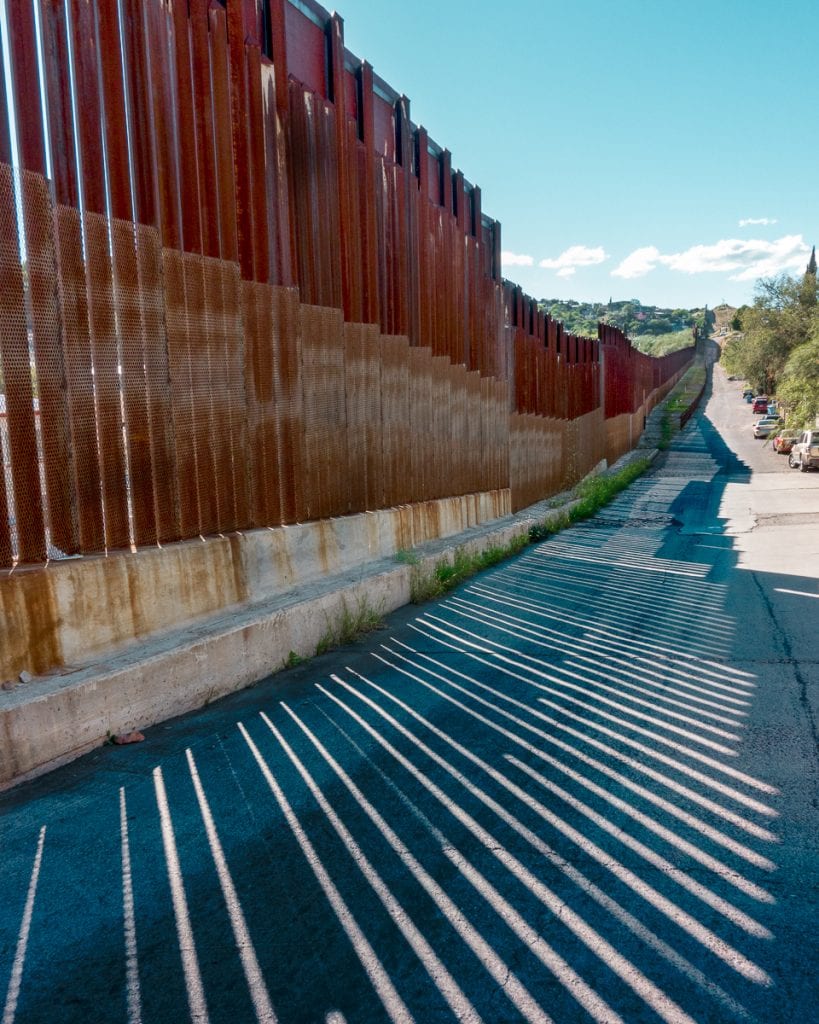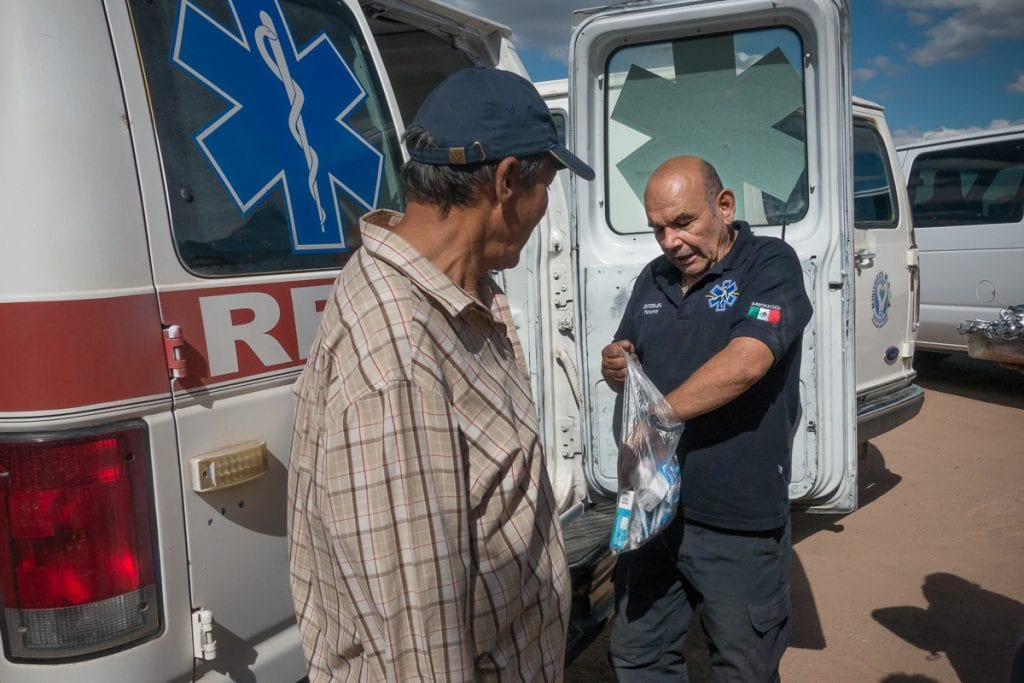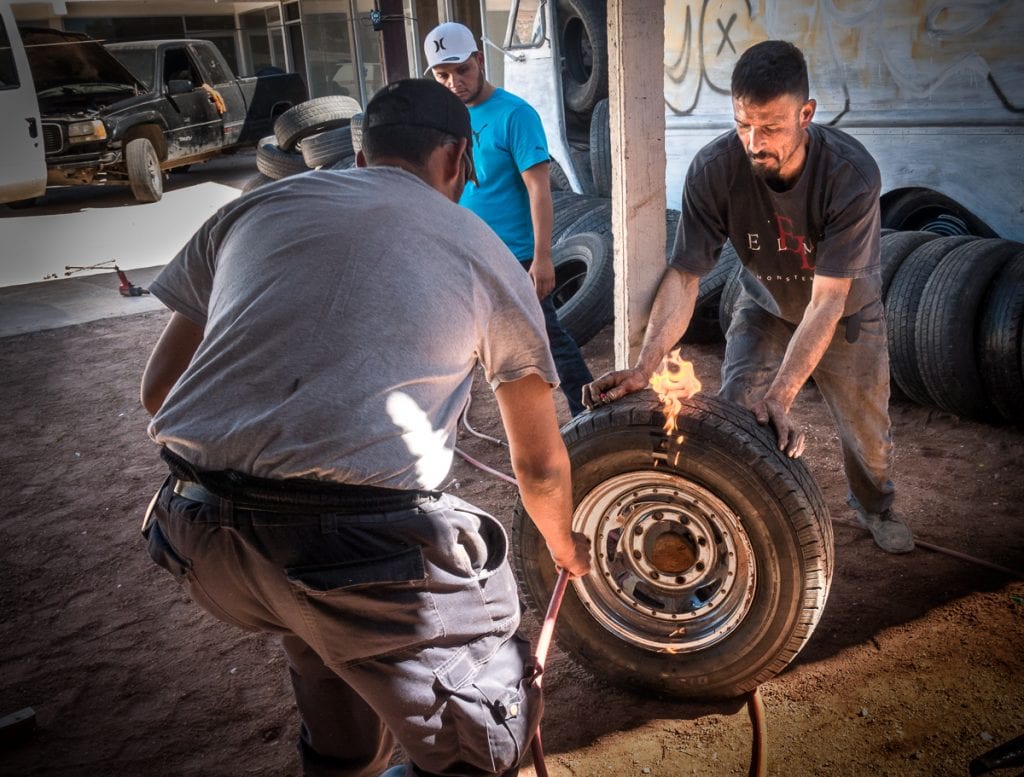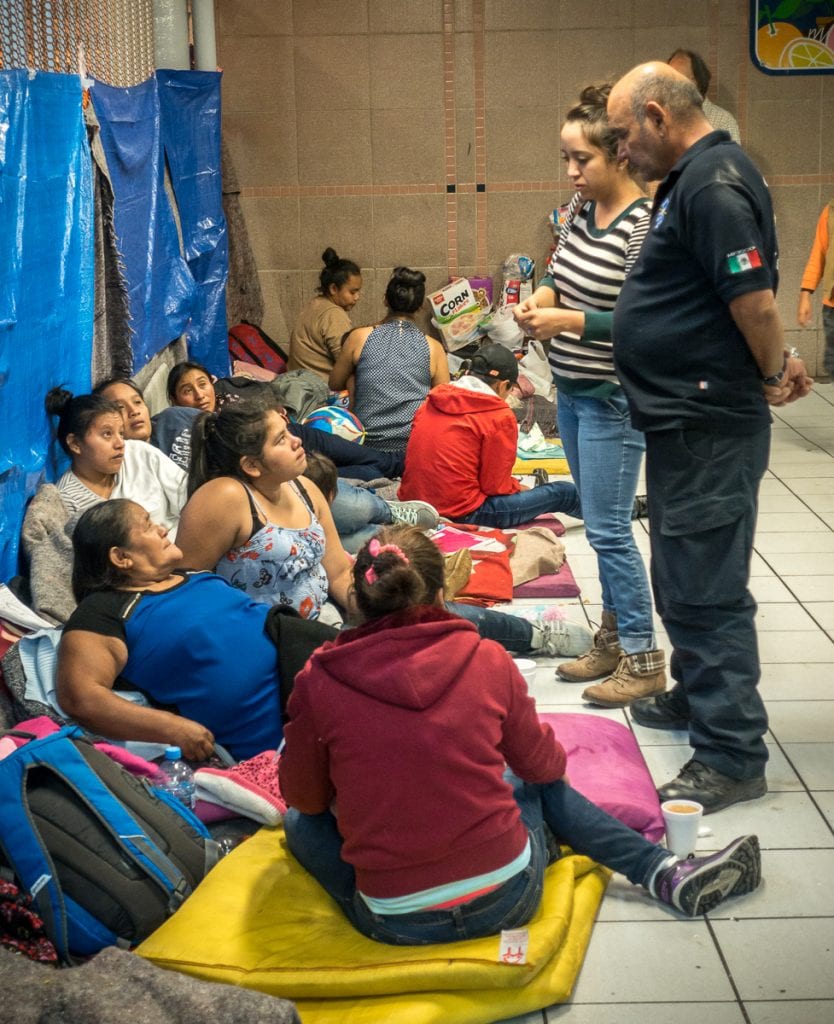Seeking Asylum at the US-Mexican Border

There’s a place where I’ve been told
Every street is paved with gold
And it’s just across
the borderline
By Ken Alexander*
HAVANA TIMES – Nogales is a bustling Mexican city on the US border 70 miles south of Tucson, Arizona. For US tourists, it is known as a place for crossing the border to find inexpensive dentists and half-price medications. But for asylum seekers arriving at this Mexican town from the south there is a different story – one of hope, heartbreak and compassion.
Fleeing violent gangs, domestic violence and high murder rates, dozens of Central Americans arrive in Nogales daily to seek asylum in the US. They have traveled weeks to get here, but often the only welcome they find is from a small network of people who volunteer their time and resources to provide safety and shelter. Soon, they may start arriving by the hundreds.
One of the central figures in this network is Panchito, who serves as the critical link between the arriving migrants and the various social services provided by volunteer organizations in Nogales. Officially, he is in charge of transport. Unofficially, he is the glue that holds this network of support together. As one of the few people in this city licensed to transport migrants, Panchito is often the first friendly face asylum seekers see. He provides medical care, food, water, toys for the children and, most importantly, a compassionate smile. Thousands have passed through Nogales, and Panchito is always there to greet them.
Ten years ago, Panchito found new purpose in life in Nogales, Mexico. After returning from three decades in the United States, he pursued his Mexican medical certification and dedicated his life to helping those in need in any way that he could.

For many years, he worked out of an old mini-van until three years ago when he was able to pull together a well-worn 2001 Ford utility van and turn it into a fully equipped ambulance. He outfitted it with benches for transport, a stretcher for emergencies and 911 calls, a siren that sometimes works, emergency lights and the words “Panchito y su Cristina” painted on the sides. Cristina is the name of the ambulance, named after his daughter. Packed with medicine, oxygen tanks, food, water, blankets and toys, Panchito and Cristina travel between Immigration, shelters and orphanages for 12 hours a day, seven days a week. In the past, sometimes homeless himself, Panchito has continued his work while sleeping in the van.
“I used to work part-time as a Mexican policeman and I also used to take 911 calls transporting people to the hospital. But with the increase in the asylum seekers arriving at the border, I don’t have time to work for pay. I spend all of my time helping the migrants. The people at the non-profits here in Mexico tell me ‘Panchito, we need you full time for the asylum seekers.’”
Although basic expenses exceed $800 a month, Panchito can only rely on about $250 a month in recurring support. Most of the funding comes out of Panchito’s own pocket and donations from concerned US citizens and organizations.
Going out with Panchito

It is a Friday evening when I meet Panchito a block away from the entrance to US Immigration on the Mexican side. His ambulance is full of newly arrived asylum seekers from Central America; all women and children. After giving them brief medical examinations, he transports them to the shelter where they are assigned a number. Each family must wait their turn before they can apply for asylum.
In the meantime, they can spend up to six months at a Mexican shelter waiting for a chance to even go into Immigration. The most recent arrival was assigned number 201, and U.S. Immigration is only just processing number 135. Sixty-six families wait their turn in crowded conditions, and more arrive daily.
Panchito explains that only 10 families are allowed to wait inside of the special Immigration holding area at one time. The holding area is a kind of a no-man’s land. Technically still in Mexico, it is a section of bare floor where a small number of asylum seekers are allowed to wait to make their application to the US authorities.
Once their number is up and they are allowed into this area, the wait is not over. Asylum seekers spend days and nights on the floor on mats and blankets provided by local non-profits. Women tend to babies, children invent games to pass the time and they all watch as a steady stream of people on the other side of the barrier walk past them to enter the US with their documents.
Some of the US citizens passing by look on with pity, most with indifference and a few with compassion. Occasionally a five-dollar bill will pass over the barrier that separates those with documents and those waiting for a new life. Nowhere else is the difference between the haves and the have-nots greater. Only some of the asylum seekers will be successful. For those families denied asylum, their options are few. Returning to Central America’s violence-plagued Northern Triangle is not one of them.
His “Cristina” appears on its last leg

The next morning, Panchito brings breakfast, checks on everyone’s medical conditions, dispenses medicine and listens to their concerns and fears. Earlier I had tried to enter this area alone and was turned back. As I follow at Panchito’s side, I slip in easily.
Later we head up the mountain to bring medicine, food and toys to the local orphanage. Panchito makes the drive up these steep, rutted dirt roads every day. He is the primary source of medical care for hundreds of poor Mexican families in the mountain communities outside Nogales. This is not his job; this is his calling.
However, Cristina is very old, and after making thousands of trips like this, she is barely holding together. We stop to replace a front tire that is bald and heavily damaged. For $22 we buy a used tire that has enough tread to last just a few months. When the mechanic is not able to mount the tire, he pours gasoline on the inside of the tire and lights it. The ignited gasoline eventually creates enough heat and gas to seal it to the rim.
Back in the ambulance, Panchito touches two ignition wires together to start the engine, and Cristina screams in protest. The engine starts, but the loud noise it produces is surely a sign of serious trouble. We drive at full speed to an auto parts store to the tune of metal grinding against metal and replace the starter in the parking lot. The only thing holding Cristina together now is faith. If the van stops running, a vital link that connects the migrants with essential services ends.

We continue on and pick up groceries. At one orphanage, Panchito hands out bananas. At the next orphanage in the mountains, he distributes medicine to the workers. Cristina limps down to town as we head back to Immigration. Here, he brings sandwiches to the families waiting inside. “Nobody will be seen by Immigration today,” he tells me. It will be another long night.
A woman from the US arrives through the pedestrian entrance to Mexico with blankets for him to distribute. The nights are getting cold. He checks to see how many diabetes testing strips he has left. He is running low. The woman who used to bring them has not come for several months now.
After a quick dinner, we are back at Immigration. Cases of bottled water appear, and he hands them out as he speaks with each asylum seeker. There is a quick meeting with the shelter supervisor who keeps the list of the people waiting for asylum. Everyone is updated. A cart is wheeled in, and dinner is scooped into cups. Then everyone settles down under the unforgiving glare of the fluorescent lights for another night of uncertainty.
As I leave the next day, I walk past the same group with my passport in hand. I wave across the barrier, and we exchange smiles. They have more hope than they probably should.
A few days later, I text Panchito, and he informs me that Cristina is in the shop. No one says it, but we all know that Cristina’s days are close to over. We all worry what that will mean for those waiting and for those just arriving in Nogales, Mexico.
This is the fragile nature of life at the border.
And when it’s time to take your turn
Here’s a lesson that you must learn
You could lose more than
you’ll ever hope to find
But hope remains when pride is gone
And it keeps you moving on
Calling you across
the borderline
(Ry Cooder)
*Ken Alexander is a freelance photographer and journalist from Woods Hole, MA, USA. He can be reached at [email protected].
Click on the thumbnails below to view all the photos in this gallery. On your PC or laptop, you can use the directional arrows on the keyboard to move within the gallery. On cell phones use the keys on the screen.


























